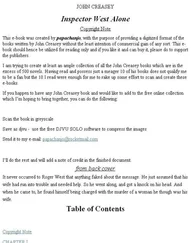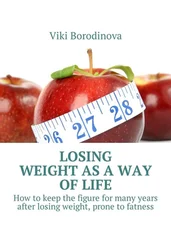Vivienne’s childhood was secure and happy. She enjoyed exploring the lyrically beautiful nearby peaks and dales. Finding hideaways in the wooded terrain of the Snake Pass and Devil’s Elbow towards Cut-Throat Bridge, she would read adventure stories or tuck into a picnic of treats from her aunt’s greengrocers, washed down with home-made dandelion and burdock lemonade. It was during these solitary, free-roaming days in this gauzy, rain-softened terrain that she developed what she has called her ‘country heart’; her subsequent nostalgia for the English rural idyll and her knowledge of its flora and fauna. Two decades later, money being short, she used her knowledge of edible plants to feed her family; as a designer she would refer back to country pastimes – fell-walking, riding, fishing, shooting – to create clothes that, even though they were worn by the hurried city-dweller, conjured up the unhurried, idealised Arcadia of her childhood.
From 1951, a recession developed in the British cotton industry as competitively priced imports from Hong Kong, India and Pakistan began to flood the home market. Large numbers of jobs were lost in Glossopdale’s mills, and while some of Vivienne’s neighbours found employment in the new chemical and plastics firms that moved into the area, many joined the ranks of the unemployed or the economic migrants. The hardships Vivienne witnessed left their mark on her: it would be many years before she placed what she saw as the indulgence of higher education above her anxiety to earn her keep.
Almost effortlessly, Vivienne won a place at Glossop Grammar School in 1952. According to her maternal aunt Ethel Mitchell, who owned a sweet shop in Tintwistle: ‘Before her eleven-plus I remember Dora suggesting that Vivienne should be swotting. Vivienne simply said, “Why?” She knew it all, and passed with good grades.’
Glossop Grammar School was three miles from the Swires’ home, and was reached by a bus that travelled across Woolley Bridge, which separated Cheshire from Derbyshire, past several cloth mills, under a viaduct and into the market town of Glossop. The handsome stone building, erected in 1899 by Francis Fitzalan, the second Lord Howard, as an art and technical school for mill apprentices, stood on the corner of Talbot Street and Fitzalan Street. In 1903 it became a grammar school, with the brightest local children competing for places. Reginald Barnsley, who was at the school at the same time as Vivienne, recalled that ‘science, maths, English were important. Music, PE and woodwork didn’t count for much … it was a learning school with seven lessons a day.’
Formality and propriety characterised this proud grammar school, which is now an adult education centre. Only teachers and sixth-formers could pass through the main entrance, under a stone-carved plaque bearing the school’s motto: Virtus, Veritas, Libertas (Honour, Truth, Liberty). Juniors had to use the back door, where they changed from outdoor shoes into indoor pumps. The boys, dressed in grey trousers and maroon-and-navy striped blazers, crossed the black-and-white-tiled hall and climbed the left-hand arc of the rosewood staircase to assembly, while the girls, in grey skirts or gymslips, blazers, white blouses and grey stockings, filed up the right. The staff room and offices had long casement windows which overlooked The Nab, a substantial hill at the back of the building, but the classrooms had high windows to prevent pupils from being distracted by daydreams.
A memorable event of Vivienne’s youth was the coronation of Queen Elizabeth II on 2 June 1953. It rained that day, and the Swires attended a celebration tea party at Tintwistle Sunday School, which was hung with patriotic bunting and banners. Waving their Union Jacks, the party then proceeded to a neighbouring cottage where they crowded into the front room to watch the event on television. The image of the royal family and all its tradition and pageantry must have had an impact on the visually alert twelve-year-old Vivienne, for she was to exploit them, both positively and negatively, in her creative life many years later.
A few months after the coronation, the Swires rented a new council house for a year in nearby Hollingworth, and then, in 1954, Dora was given the opportunity to become the Tintwistle village postmistress. The family moved into the building which housed the post office in its flagstoned basement at 36 Manchester Road, at the end of a terrace of five. Dora, exhibiting the distinctive independence of the women of her family, boasted proudly that the post office was ‘in her name’. All three children inherited this ‘supreme self-confidence’ which their maternal aunt, Ethel Mitchell, observed and shared. Vivienne’s early role models were matriarchal. Power resided with the women in the family, and Vivienne soon displayed their strident determination.
As well as distributing the post, Dora also ran a little general store in which she sold a few of the cheaper magazines, such as Woman’s Own and Women’s Weekly , that disseminated the fashions of the time in a watered-down form, and provided dressmaking and knitting patterns. She also stocked a small selection of clothing, such as underwear from John Smedley, the Derbyshire specialists in fine-gauge knitwear, and traditional gymslips (both of which were to feature in Vivienne’s collections in the 1980s – when Vivienne’s school uniform changed to skirt and blouse, she insisted on keeping her gymslip).
Young Vivienne was determined to make her mark at her new school, to be ‘more extreme’ than the crowd. In her attention-seeking manner, she was always first to raise her hand in answer to a teacher’s question, to the annoyance of her classmates. One contemporary, Eileen Mellish, remembers Vivienne as argumentative, getting ‘a bit humpy’ when the biology teacher chastised her, and climbing out of the window when she had been locked into a classroom for detention. With her unusual cast of mind, Vivienne would find tangential solutions to set questions: when the class was given the title ‘Bats in the Belfry’ for a painting, Eileen Mellish recalls, ‘We all imagined a church, but she went psychological and did bats in the head. She was smart.’
Her maths teacher, Jack Holden, however, finds it hard to recall Vivienne: she was ‘an unremarkable girl, you didn’t notice her’. Vivienne was certainly not a distinguished scholar, though she did reasonably well at English, sports and art, for which she took lessons after school with the art teacher, Gordon Bell. She did come third in the high jump at the school sports day, and when she entered the annual poster competition at the age of fifteen, she was highly commended, ‘which, as you know,’ says Holden, ‘means she didn’t quite make it. Looking at Vivienne Swire and looking at Vivienne Westwood, I would just sit there in total amazement. How on earth the one became the other is quite beyond me. But you see, we are nice people. You didn’t do outrageous things.’
It was exactly this sense of propriety that Vivienne wished to challenge, with bold actions such as ‘always {being} the one who kissed the teacher under the mistletoe at Christmas’. Bob Noton, a primary-school sweetheart, was enamoured of her ‘striking’ looks, composed carriage and long dark hair neatly tied back in a ponytail. He found her direct and flirtatious. But when the pair went on to Glossop Grammar School, he was summarily dumped: there was ‘too much competition by the other boys for Vivienne – she was a hot date and knew she was a good-looking, bonnie girl’. Vivienne is also remembered for making a point of championing an unpopular and lonely boy, a moralising and self-publicising stance.
With the onset of puberty Vivienne, who claimed to have had a boyfriend from the age of ten, began to show an interest in sex which her mother would have dubbed ‘fast’. She went with her schoolfriend Anne Shaw to Sunday school dances, and looked forward to rainy days when games were replaced by ballroom dancing in the school gym. She boasted that she had a different boyfriend every week: ‘I was straight until I was fourteen. Then I went funny … boredom, bad boredom.’ Though she says she did not indulge in full sexual intercourse (something her parents had brought her up to believe was only to be enjoyed within marriage) until her late teens, her physical relationships were ‘quite heavy, lots of kissing and all that’. A former classmate remembers the fifteen-year-old Vivienne flaunting a ring and proudly announcing that she was engaged.
Читать дальше












